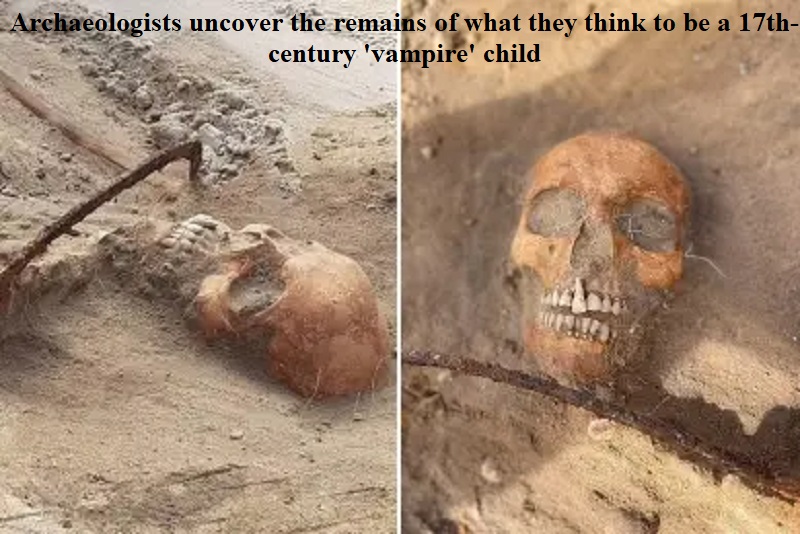
Archaeologists have made a fascinating and eerie discovery in Poland, unearthing the remains of a child from the 17th century believed to have been subjected to a superstitious burial ritual as protection against the possibility of the child returning as a “vampire.” The child was interred face down and secured to the ground with a padlock. This unique grave was found in a necropolis in the village of Pien in south-eastern Poland, where many individuals have been laid to rest over the centuries.
A team of archaeologists from the University of Nicolaus Copernicus in Torun conducted this discovery during an excavation at an early medieval graveyard near D?browa Che?mi?ska. The researchers were specifically looking for distinctive burial practices, and this child’s grave was among 30 others they explored.
Analysis suggests that the child was around five to seven years old at the time of death. Dariusz Poliski, one of the researchers involved in the excavation, explained that families of the time often used protective measures on the deceased to guard against the possibility of the departed returning to the living world. The padlock placed beneath the child’s foot was symbolic, representing the end of a life stage and meant to prevent any unwanted return. This practice, rooted in folk beliefs, is sometimes referred to as “anti-vampiric.”
Poliski further elaborated that burying bodies face down was intended to make the deceased “bite into the ground” to ensure they wouldn’t pose a threat to the living. A triangular padlock identical to the one found with the remains of a medieval woman at the same site last year was discovered beneath the child’s bones.
Interestingly, the child’s grave had been disturbed, with a portion of the corpse removed. The circumstances surrounding this violation remain unclear, leaving unanswered questions about when and why it occurred, as well as the fate of the missing remains.
Near the child’s grave, a peculiar arrangement was found: a group of five children’s corpses, with one of them having a green-colored jaw fragment. This greenish tint was also observed on the palate of the woman unearthed at the site the previous year. During their excavation work, the team made another intriguing discovery – the burial of a pregnant woman, with remnants of her fetus seemingly preserved, adding to the mystery of this historical necropolis.

Post Your Comments